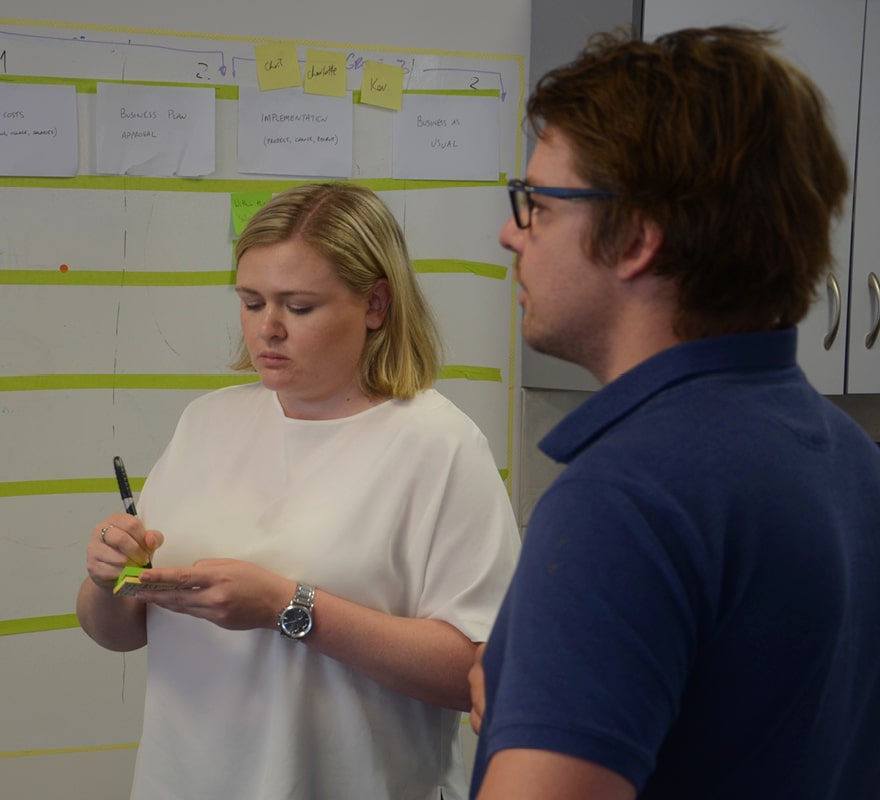
Key points
- The challenge was to design and create an emergency risk response implementation strategy that demonstrated the future operation of a mining asset.
- The 28-day risk response implementation strategy was prototyped and presented in order to proceed with a test run at a mining asset.
- Outcomes and decisions that could’ve taken more than three months were achieved in three intense days!

Their brief to us
OZ Minerals embarked on a co-design strategy program to create a ‘future-state’ response to a major threat or opportunity at one of their mining assets. With a theoretical window of 28-days to respond and 48 hours to design a strategy to present to the board, a specialist team of SMEs across the organisation aimed to establish a margin-driven, collaborative planning and execution process for one of their mining assets. The goal was to bring together different thinkers/ skills/ experience in the room and provide an outcome that would change mindsets to enable a ‘step-change’.

What we did

The team designed all facets of a 28-day risk response implementation plan which covered the process featuring a rolling and iterative Agile Sprint project production process. It also included related governance structure, process flows for teams to follow and recommended tools (already native to OZM) to share information.
Persona profiles were first created from real-people operating the asset to understand the impact with any change to the site. From there, the team created an experience map that incorporated the actions, touchpoints and tools that were applicable to a typical day-to-day scenario. With a clear understanding of context and direction it was time to shift people’s focus from current state to future state by using ‘How might we’ framing statements.
The final prototype outlined a 28-day risk response implementation plan which was developed into a presentation. This was then presented to people within OZ Minerals. The diversity of these test subjects provided tremendous value in empathising with the people that are impacted by the current process as well as the potential impact of such a radical proposal. The feedback gathered was used to refine the final prototype so it would be ready to be put in front of the Executive Board for the next stages of development.

The Result
Overall, the outcome from testing was successful and the testing participants positively endorsed the proposed 28-day risk response implementation plan. Outcomes and decisions that could’ve taken more than three months were achieved in three days, and would not have been possible without the knowledge, input and participation of the group.
The proceeding outcome of this Design Program would be the benchmark for future projects and indicated as a model for the Transformation Team.

